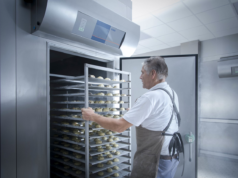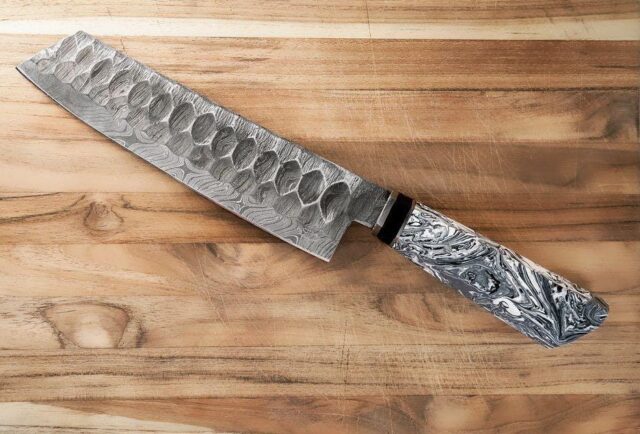
A Damascus knife is not just a tool; it is a piece of art, deeply rooted in history and tradition. Originating from the ancient city of Damascus, these knives are renowned for their distinctive patterns reminiscent of flowing water and other natural elements.
Crafted through a meticulous process of folding and hammering different types of steel, Damascus knives are as sturdy as they are beautiful, boasting exceptional strength, sharpness, and durability. However, like all masterpieces, they require special care. Proper maintenance of a Damascus knife extends its lifespan and preserves its exquisite quality and performance.
This article provides detailed information about caring for and maintaining your Damascus knife to ensure it remains a timeless piece of art and an efficient cutting tool. With the right knowledge and tools, every Damascus knife owner can become a custodian of history, art, and exceptional craftsmanship, ensuring that these iconic knives are passed down through generations, each telling a tale of meticulous preservation and respect.
Damascus Knives
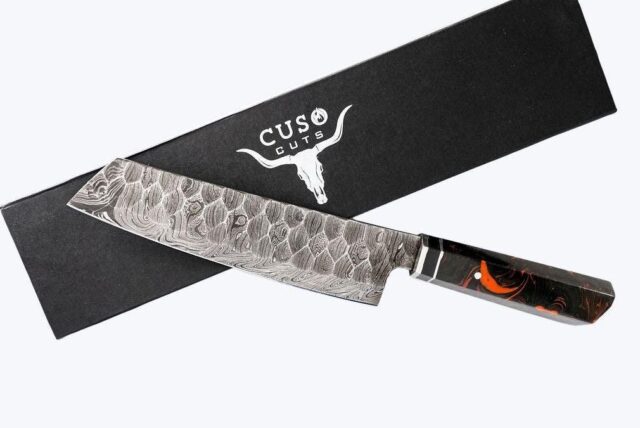
The crafting process of Damascus knives is a tedious and mesmerizing art form, steeped in tradition yet refined by modern techniques. It begins with the strategic combination of different types of steel, each chosen for its unique properties to impart a balance of strength, flexibility, and durability to the finished blade.
Layers of steel are forged together, and through a series of folding and hammering, distinctive patterns emerge, each as unique as a fingerprint. The elegance of these patterns is not just aesthetic but is a testament to the skill and precision of the craftsman. The blade then undergoes a rigorous heat treatment process, resulting in a blade that is as functional as it is beautiful, each telling a story of its artisan’s skill and dedication.
Every hammer strike, every fold, and every grind is infused with the craftsman’s skill and passion. This individual touch ensures that every Damascus chef knife, while rooted in tradition, is a unique masterpiece, distinguished by its own character and story.
Cleaning Your Damascus Knife
Frequency and Timing
Cleaning a Damascus knife is a delicate balance – it’s important but should not be overdone. Typically, a thorough cleaning after each use ensures the knife’s longevity and performance. The ideal conditions for cleaning include a well-lit, dry, and clean environment to ensure no foreign particles damage the knife during the cleaning process.
Materials Needed
Soft cloths, gentle cleansers, and specialized tools ensure that the knife is cleaned without causing any damage. Each material is chosen for its efficacy in removing debris and stains while preserving the knife’s intricate design and sharpness.
Step-by-Step Cleaning Process
Cleaning a Damascus knife involves precision and care. Follow a systematic process to ensure every part of the knife is adequately cleaned, paying close attention to the blade’s unique patterns. Utilize tips and tricks to clean each detail in the designs, ensuring the removal of debris and moisture, which are adversaries to the knife’s pristine condition.
Sharpening Your Damascus Knife
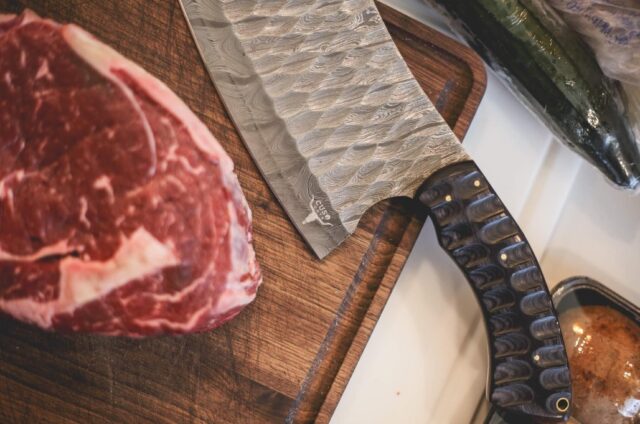
Signs Your Knife Needs Sharpening
Identifying when your Damascus knife needs sharpening is fundamental for optimal performance. An edge that’s losing its precision or a blade that requires extra effort to cut are telltale signs. Using a dull knife not only hinders performance but also poses safety risks, as it can slip and cause injuries.
Tools for Sharpening
The marketplace offers a variety of sharpening tools, each designed to restore your blade’s sharpness with precision. From sharpening stones to honing rods, selecting the right tool is crucial and depends on the specific needs of your Damascus knife. Understanding their functionalities and compatibility with your knife ensures effective sharpening.
The Sharpening Process
Preparation is key; ensure your knife and tools are clean and dry. Mastering sharpening techniques, often involving specific angles and strokes, restore the blade’s sharpness without damaging it. Test the knife’s sharpness to verify that the process has been effective and that the knife is ready for safe and efficient use.
Storing Your Damascus Knife
The Ideal Storage Conditions
A controlled environment with balanced temperature and humidity prevents rust and corrosion. Protecting the knife from external elements is also critical to maintaining its aesthetic and functional quality over the years.
Storage Options
Various storage options, including knife blocks, magnetic strips, and sheaths, cater to different needs and preferences. Knife blocks protect the blade while offering easy access, magnetic strips provide visibility and space efficiency, and sheaths offer portability and protection.
Routine Checks and Updates
Regular inspections are necessary to ensure the knife remains in impeccable condition. Establishing a schedule for these checks ensures consistent maintenance. Be prepared to update storage methods in response to wear and tear or environmental changes to uphold the knife’s quality and performance.
Addressing Common Issues
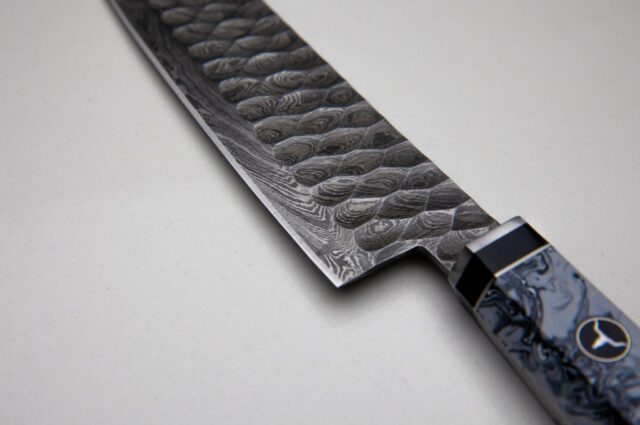
Rust and Corrosion
While uncommon for these high-end blades, rust, and corrosion can be a Damascus knife owner’s worst nightmares. Often caused by prolonged exposure to moisture or harsh chemicals, prevention simply involves regular cleaning and proper storage to ensure the knife stays dry and protected. Should rust or corrosion occur, various treatments, from specialized cleaners to professional restoration services, can return the blade to its former glory.
Edge Rolling and Chipping
Edge rolling and chipping are issues that stem from misuse or accidents. Understanding these issues is the first step toward prevention. Employing proper cutting techniques and avoiding hard surfaces can significantly reduce the risk. If the edge rolls or chips, professional honing or even regrinding can restore the knife’s sharpness and form, ensuring it remains a functional piece of art.
The Damascus knife stands as a testament to the craftsmanship that bridges history and modernity. By immersing in the detailed care processes of cleaning, sharpening, and storage, and by handling common issues with informed solutions, you can ensure that each knife is not only a tool but a preserved piece of art.



